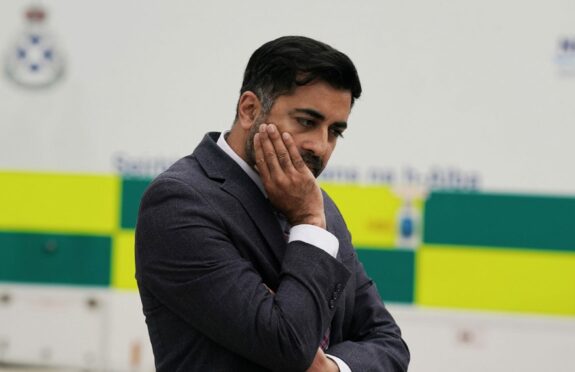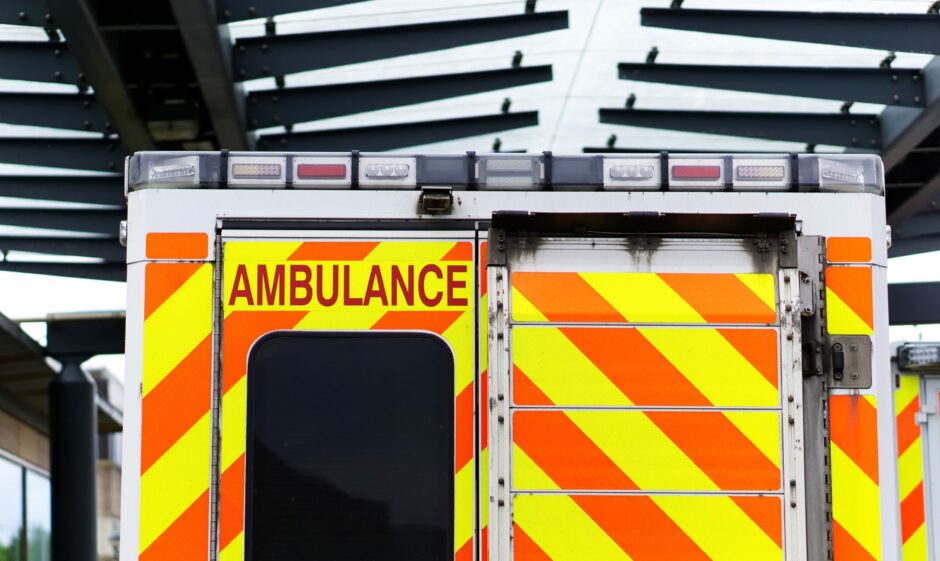
Student ambulance technicians with just a few months’ training are being sent to emergencies alone because of a shortage of experienced staff.
The one-member 999 response has, according to sources, been sent to call-outs involving patients suffering life-threatening collapse and potentially-fatal emergencies.
Single-crew ambulances have also been sent to serious road accidents on the A9, Scotland’s most dangerous road, causing delays to transferring patients to hospital.
The Scottish Ambulance Service yesterday said that single-crews are only deployed in exceptional circumstances but doctors warn putting sole responsibility on student technicians is unfair on them but potentially disastrous for patients.
One source said: “We have student technicians being sent out to cardiac arrests and other category one calls because they are the only ones on call at their station.
“Ambulance staff all wear the same green uniform so patients and their families do not know if it is a paramedic or student coming in through the door to a 999 call.
“We are told making all the uniforms green instead of distinguishing students from technicians and paramedics was done on the basis of cost but it also gives the public a false sense of security.”

Scottish ambulance technician training takes 16 months and includes 10 weeks of classroom work, placement at a station and four weeks of training in emergency response driving.
One Highland GP said sending ambulances with a single trainee is an increasing concern. He said: “We are being told students are being sent out on their own which is both unfair on the students and potentially catastrophic for patients.”
He also told how a single-crewed ambulance – though not one with just a trainee on board – had been sent to a serious accident on the A9, but had been unable to transport the patient to hospital because that required two staff. He said: “That patient has a delay in being transferred to hospital because the technician or paramedic cannot drive while monitoring the injured patient in the back.”
That meant a GP at the scene had to go with the vehicle. He said: “The GP has to make a decision to travel to hospital with the patient and leave their practice and possibly more emergency call-outs behind or wait for a back-up paramedic who could be another hour away.”
Sixteen people have died in accidents on the A9 this year, the highest figure since 2001, and another paramedic revealed the pressure of doing CPR solo. They said: “We have made Datix [adverse events] reports to our bosses but many of us now don’t bother because nothing is done to stop sending single crews to emergencies.”
Communities fear delayed hospital transfers may cost lives. The Journal of Emergency Medicine recently revealed one in 82 patients who waited six hours being transferred to bed, died because of the delay.
Liam Taylor, chairman of Assynt Community Council in the North West Highlands, said: “There is a limit to what one technician can do and people are rightly concerned over the level of care available to rural communities. The nearest paramedic back-up is an hour away in Ullapool or Kinlochbervie and survival for patients needs to be considered. They may well have to drive to Inverness two hours away.”
Scottish Labour public health spokesperson Paul O’Kane said “These reports lay bare the dangerous chaos at the heart of our ambulance service. There is no doubt that lives are being put at risk by this crisis. We urgently need a real plan to support ambulance services.”
Health Secretary Humza Yousaf is fighting fires across NHS Scotland, with staff shortages slowing treatment and increasing waits for patients. Last week, he apologised to the 750,000 Scots now on NHS waiting lists but warned there is a perfect storm of issues battering the service while there is no easy solutions.
GMB Scotland Secretary Louise Gilmour said: “The scale of the understaffing crisis across the NHS means the Scottish Ambulance Service is past the point of sustainable delivery, and the mounting pressures on hard-pressed workers are unbearable.
“The sobering testimonies from workers on the frontline are just the tip of the iceberg. Ministers must invest in the people and resources needed to sustainably deliver frontline services using the full financial powers they have at their disposal.”
The Scottish Ambulance Service said: “Ambulances are not routinely single-crewed other than in exceptional circumstances, such as short notice unplanned staff absences. Every effort is made to double-crew ambulances through rostered and relief staff, overtime or bank staff.
“We also have a wide range of additional resources which can be deployed depending on the nature of the incident and the condition of the patient. We continue to invest in new ambulances, the latest equipment and staff, building on the recruitment of 540 A&E staff last financial year.”

Enjoy the convenience of having The Sunday Post delivered as a digital ePaper straight to your smartphone, tablet or computer.
Subscribe for only £5.49 a month and enjoy all the benefits of the printed paper as a digital replica.
Subscribe